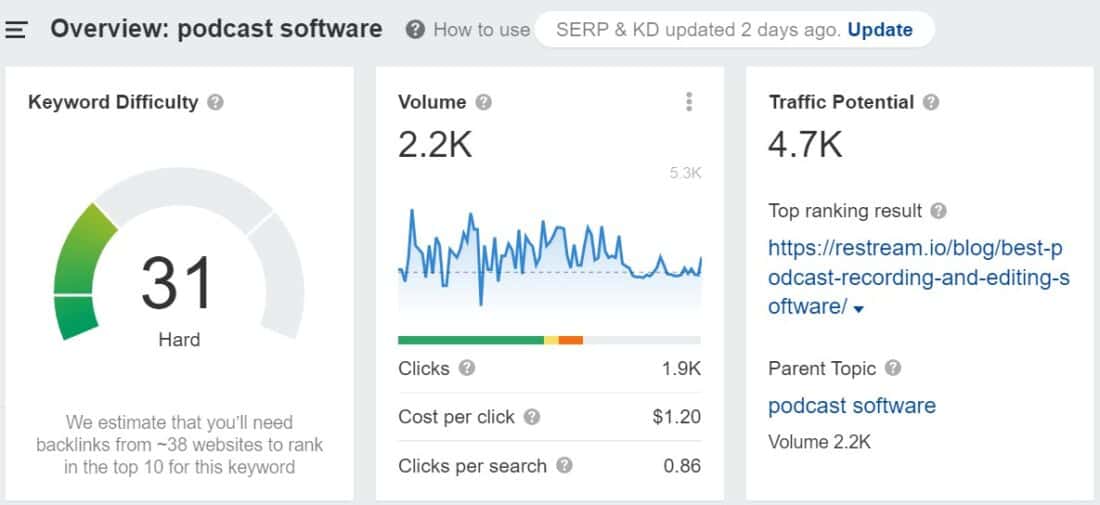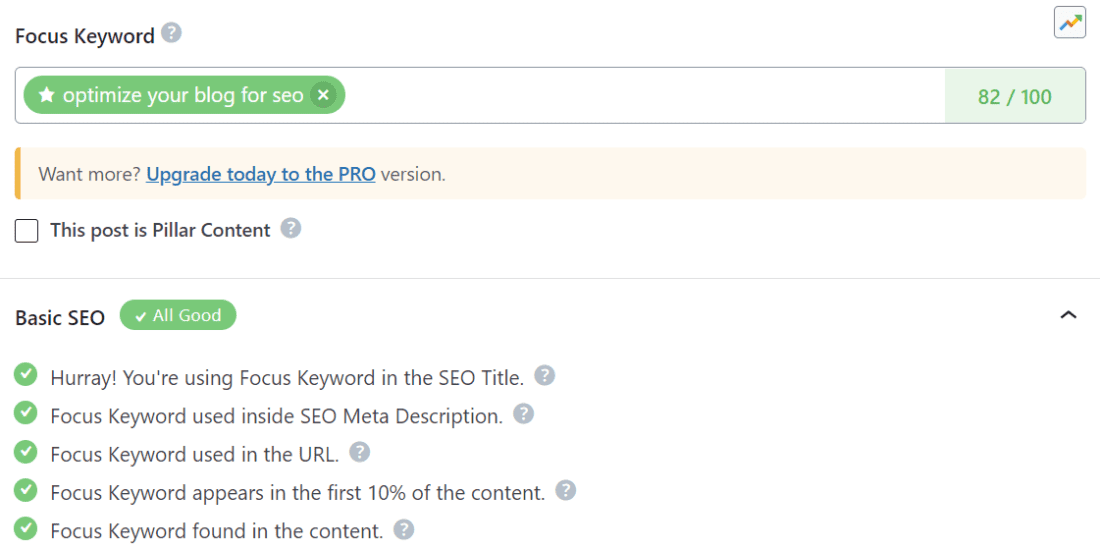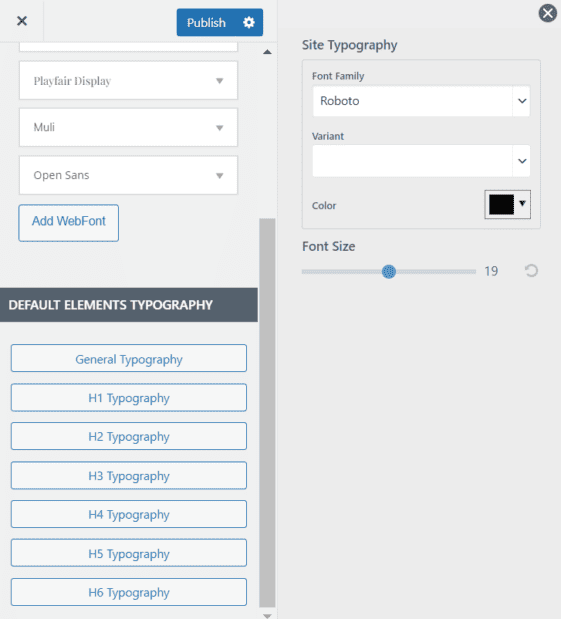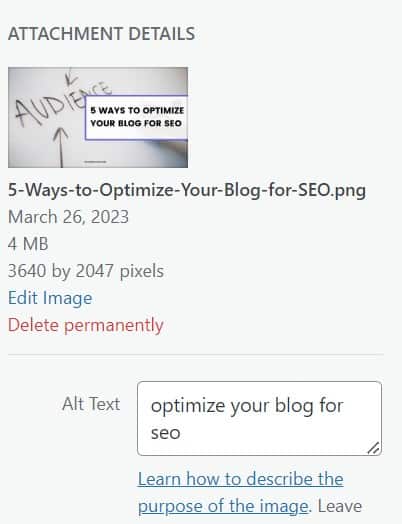Blog SEO is vital for creating a blog post that ranks high in search engine results is a key ingredient for online success.
As search engines continue to evolve, it’s essential to understand and implement effective SEO strategies to ensure your blog posts receive the visibility they deserve.
In this comprehensive guide, we’ll share 17 valuable tips to help you craft SEO-friendly blog posts that attract organic traffic, engage your audience, and boost your search engine rankings.
1. Use a Keyword Tool
Iidentifying relevant keywords that have high search volume and low competition is the most important part of Blog SEO.
This helps you understand what your target audience is searching for and allows you to optimize your content accordingly, increasing your chances of ranking higher in search engine results.
SEMrush, Ahrefs and Ubersuggest are examples some popular SEO tools. Investing in an SEO tools can be a significant expense, but the benefits they bring to your Blog SEO efforts make them worth the investment.

SEO tools provide valuable insights and data that help you optimize your website, analyze competitors, track keyword rankings, monitor backlinks, and more.
2. Use an SEO Plug-in
An SEO plug-in provides valuable assistance in optimizing your blog posts by offering features such as content analysis, keyword optimization, meta tag management, XML sitemap creation, and more.
It ensures that your posts adhere to SEO best practices, making it easier for search engines to crawl and index your content, ultimately improving your visibility and organic traffic.

The most popular plug-ins are Yoast SEO and RankMath.
I use RankMath as I preferred the design to YoastSEO but they are very similar. While there are ‘Pro’ versions available, I haven’t felt the need to upgrade yet and the free versions are good enough – especially for beginners.
3. Add Focus Keyword to the Blog Post Title
Including your focus keyword in the blog post title is crucial because it signals to both search engines and readers what the post is about.
It helps search engines understand the relevance of your content and boosts the chances of your blog post appearing in search results for that specific keyword, attracting organic traffic to your site.
4. Consider Using a Number in Your Post Title
It’s long been said that the Google algorithm favors odd numbers. Using odd numbers in your post title can make it more appealing and clickable to readers.
Not only that, but numbered lists or tips provide a clear structure and indicate that your content offers specific, actionable information, increasing the likelihood of engagement and social sharing.
5. Use Powerful Words in Your Post Title
Incorporating powerful and compelling words in your blog post title and content grabs readers’ attention and piques their interest.
Words like “ultimate,” “essential,” “proven,” or “exclusive” evoke a sense of value and urgency, making your content more enticing and increasing the likelihood of readers clicking through and engaging with your post.
6. Add Focus Keyword to Your Meta Description
Including your focus keyword in the meta description provides a concise summary of your blog post’s content and increases its relevance in search engine results.
A well-crafted meta description with the focus keyword can significantly improve click-through rates and drive targeted traffic to your blog post.

7. Use Focus Keyword in the URL
Having your focus keyword in the URL (slug) of your blog post helps search engines understand the context of your content and improves its visibility in search results.
It also provides a clear and concise URL structure that is user-friendly and enhances the overall SEO optimization of your blog post.
On WordPress, the option to edit the URL is under the post title.

8. Use Focus Keyword in Your Introduction
Incorporating your focus keyword in the introduction of your blog post helps establish relevance and informs both search engines and readers about the topic you’re addressing.
It sets the tone for the content and helps search engines understand the main focus of your post.
9. Use Focus Keyword Around 4 Times in the Body of the Content
Sprinkling your focus keyword naturally throughout the body of your content helps reinforce the relevance and topic of your blog post.
It assists search engines in understanding the main theme of your content and improves its chances of ranking higher for that keyword.
10. Use Focus Keyword in Subheadings (H2, H3, H4, etc.)
Utilizing your focus keyword in subheadings not only enhances the readability and structure of your content but also reinforces the topical relevance for search engines.
It signals the different sections and topics within your blog post, making it easier for search engines to comprehend and index your content.
11. Ensure Your Typography Settings are Right
To maintain a clean and uncluttered look on your blog, limit yourself to using only two fonts, one for H1 Titles (such as blog titles) and the other for paragraph/body text.
Choose fonts that are easy to read to enhance the overall user experience of your blog. Some of the most popular options are: Roboto, Open Sans, and Lato.
You also need to ensure your font sizes are set correctly. That H1 is larger than H2, which is larger than H3, etc. Your general typography (your main body of text) should be set at around 18-20px.
To edit your typography you can head to General Settings > Typography.

12. Add an Image with Your Focus Keyword as Alt Text
Including an image in your blog post and optimizing its alt text with your focus keyword helps in several ways. It provides visual appeal, breaks up the text, and improves accessibility
for visually impaired users. Additionally, search engines can understand the context of your image through the alt text, contributing to the overall SEO optimization of your blog post.

13. Write at Least 600 Words but Preferably 1500
Creating long-form content with a minimum of 600 words provides ample opportunity to cover a topic in-depth and satisfy search engine algorithms, which tend to favor comprehensive and informative content.
Aim for a lengthier blog post of around 1500 words whenever possible, as it offers more opportunities for keyword optimization, addressing subtopics, and providing value to readers.
14. Use Short Paragraphs
Breaking down your content into shorter paragraphs improves readability and enhances the overall user experience. Dense blocks of text can discourage readers from engaging with your post.
Short paragraphs make your content easier to skim and digest, allowing readers to quickly grasp key points and stay engaged.
15. Link Out to External Resources
Incorporating relevant outbound links to authoritative external resources adds credibility and value to your blog post. It signals to search engines that you’ve conducted thorough research and provides additional information for readers.
Linking to reputable sources can also encourage backlinks and improve your own site’s authority.
16. Add Internal Links in Your Content
Including internal links to other relevant blog posts or pages within your website helps readers navigate your content and discover related information.
It also strengthens the overall structure of your website and improves its SEO by distributing link equity and improving crawlability.
17. Consider a Table of Contents Plugin
Using a table of contents plugin can enhance the user experience by providing a clear overview of your blog post’s structure and allowing readers to navigate directly to specific sections.
This feature improves readability, reduces bounce rates, and ensures that readers can easily find the information they are looking for.
Conclusion
Mastering Blog SEO techniques is vital for creating blog posts that rank high in search engine results and contribute to your online success.
As search engines evolve, understanding and implementing effective SEO strategies become even more crucial to ensure your blog posts receive the visibility they deserve.
